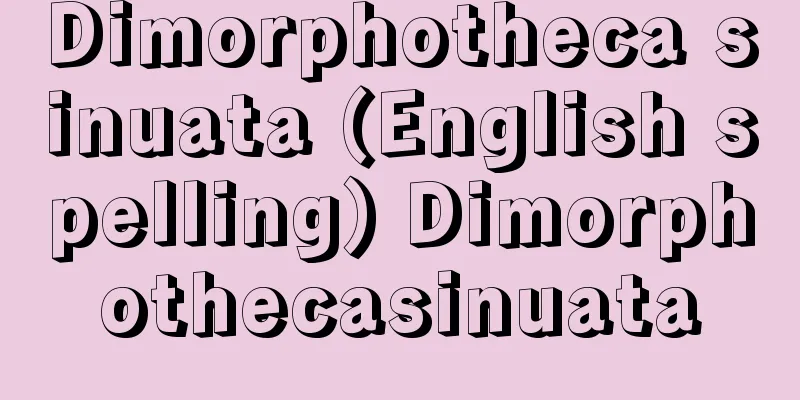Proclamation of the Great Religion - Taikyou Senpu

|
The Meiji Restoration government's policy of educating the nation through Shinto. The new government appointed a missionary in 1869 (Meiji 2), and on October 9 of the same year made it an associate of the Jingikan. This missionary could be considered the successor to the Education Bureau, which was established in March of the same year, and was established for the purposes of defending Christianity and educating the nation through Shinto. On January 3 of the following year, 1870, a ceremony was held at the Jingikan Shrine, and at the same time, the "Proclamation of the Great Rescript" was issued, ordering the missionary to "make clear the principles of governance and thereby promote the great path of Shinto." This "Proclamation of the Great Rescript" ordered the missionaries to indoctrinate the people with the "Great Way of God," and in March 1870, missionary offices were established in each prefecture, laying the foundations for a nationwide campaign to propagate the Great Rescript. However, due to a small number of missionary officials, an unestablished doctrine, and the lack of ability and passivity of the prefectural missionary offices, the missionaries' campaign to propagate the Great Rescript was lackluster from start to finish, and they were only able to send missionaries to Nagasaki Prefecture, which had a large Christian population. At the same time, a parishioner reform was carried out in the prefecture, and it was hoped that this, combined with the proclamation of the Great Rescript, would help to defend Christianity, but there was no visible effect. In order to break this state of affairs, the Jingikan, missionaries and government leaders began planning in the latter half of 1871 to launch a major national education campaign that would also incorporate Buddhism and Confucianism, and in March of the following year, the Ministry of Shinto and the missionaries were abolished and a Ministry of Religion was established to oversee both Shinto and Buddhism. In April, a position called the Kyodosho was created to educate the nation, and it was decided that they would proclaim three teachings: reverence for the gods and the country, Tenri and humanity, and obedience to the Emperor. The Kyodosho's great religious proclamation campaign was launched on a grand scale, mobilizing Shinto priests, monks and general Kyodosho, and attracted many listeners, playing a part in the path of modernization and enlightenment at the time. However, Shinshu religious organizations such as Nishi Honganji, which were critical of the Shinbutsu-gōdō-fukyō and wanted to spread their religion independently, demanded separation from the gōdō-fukyō under the Daikyōin system, and in May 1975 the Shinbutsu-gōdō-fukyō came to a halt with the dissolution of the Daikyōin. Although the Daikyō-fukyō continued technically until the abolition of the Kyodōshoku in 1984, in reality it came to an end with the dissolution of the Daikyōin. [Sakamoto Koremaru] [Reference items] | | | |Source: Shogakukan Encyclopedia Nipponica About Encyclopedia Nipponica Information | Legend |
|
明治維新政府の神道(しんとう)による国民教化政策。新政府は1869年(明治2)宣教使を置き、同年10月9日これを神祇(じんぎ)官の付接とした。この宣教使は同年3月に設けられた教導局の後身ともいうべきもので、キリスト教防御と神道による国民教化を目的として設置されたものである。翌70年1月3日には神祇官神殿の鎮祭が執行され、あわせて「宣布大教詔(せんぷたいきょうのみことのり)」が下され、宣教使に「宜(よろし)く治教を明らかにし、以(もっ)て惟神(いしん)の大道を宣揚すべき」ことが命ぜられた。 この「宣布大教詔」によって宣教使は国民に「惟神の大道」を教化することになり、1870年3月には各府藩県にも宣教掛(かかり)が置かれて全国的な大教宣布運動が行われる基盤ができた。しかし、宣教使官員の少なさや教義の未確立、あるいは府藩県宣教掛の能力不足、消極性もあって、宣教使の大教宣布運動は終始不振で、かろうじてキリスト教徒が多い長崎県に宣教使を派遣して宣布を行ったにとどまった。同県では、同時に氏子改(うじこあらため)がかりに施行され、大教宣布と相まってキリスト教防御が期待されたが、みるべき効果はなかった。 このような状態を打破するため、神祇官、宣教使および政府首脳は、1871年後半から仏教・儒教をも取り込んだ一大国民教化運動を展開することを企て始め、翌72年3月に神祇省、宣教使を廃して神仏両教を管する教部省を設けた。4月には国民教化の任にあたる教導職が設けられ、敬神愛国、天理人道、皇上奉戴(ほうたい)という三条の教則を宣布させることにした。この教導職による大教宣布運動は、神官、僧侶(そうりょ)および一般教導職を動員して大々的に展開され、多くの聴聞者を集め、当時の文明開化路線にも一役買った。しかし、神仏合同布教に批判的で独自の布教を望む西本願寺などの真宗教団は、大教院体制下の合同布教分離を要求し、75年5月には神仏合同布教は大教院の解散によって頓挫(とんざ)した。大教宣布は形式的には84年の教導職廃止まで続くが、事実上はこの大教院解散によって終息した。 [阪本是丸] [参照項目] | | | |出典 小学館 日本大百科全書(ニッポニカ)日本大百科全書(ニッポニカ)について 情報 | 凡例 |
<<: The Great Fear (English: Grande Peur, French)
>>: Daikyoji Mukashigoyomi - Daikyoji Mukashigoyomi
Recommend
Kill Pochin, VY - Kill Pochin
...The Convention defined "socialist realism...
"The journey of the butterfly Hatsune" - The journey of the butterfly Hatsune
…【Yokomichi Mario】(2) Kabuki dance, Kiyomoto. Ori...
Horaga Pass - Horaga Pass
A pass on the border between Yawata City, Kyoto P...
Małopolska (English spelling)
Historical name of the southern and southeastern p...
Enceladus - Enceladus (English spelling)
One of Saturn's moons. It has a diameter of ab...
emperor
…(1) Imperator comes from the Latin imperare, mea...
Bateson, William
Born: August 8, 1861, Whitby, Yorkshire [Died] Feb...
Tuluva
…1336-1649. It was succeeded by four different ro...
Bulbophyllum macraei (English spelling)
… [Ken Inoue]. … *Some of the terminology that me...
Nisemurasaki Inakagenji - Nisemurasaki Inakagenji
A collection of volumes written by Ryutei Tanehik...
Interstitial cells - Kansaibo
Glandular cells found in the testes of vertebrate...
Epitaph - bohimei (English spelling)
An inscription engraved on a tombstone to commemor...
Peroxidase reaction
A special cytochemical staining method used to cla...
Vacuum distillation
Distillation under reduced pressure. Generally, th...
Vimana (English spelling)
The term refers to the main hall in Hindu and Jain...









